10. Fritz X
Considered by many to be the grandfather of the modern smart bomb, the Fritz X was one of HItler’s most secret bombs. This radio guided glide bomb was intended to use against heavily protected targets such as battleships and heavy cruisers, which wasn’t a problem considering the warhead carried over 700 pounds of explosives. The Fritz X proved to be highly successful in combat when it was deployed near the islands of Malta and Sicily in 1943. In fact, the American light cruiser by the name of USS Savannah was rendered out of commission for an entire year after being hit by this bomb.
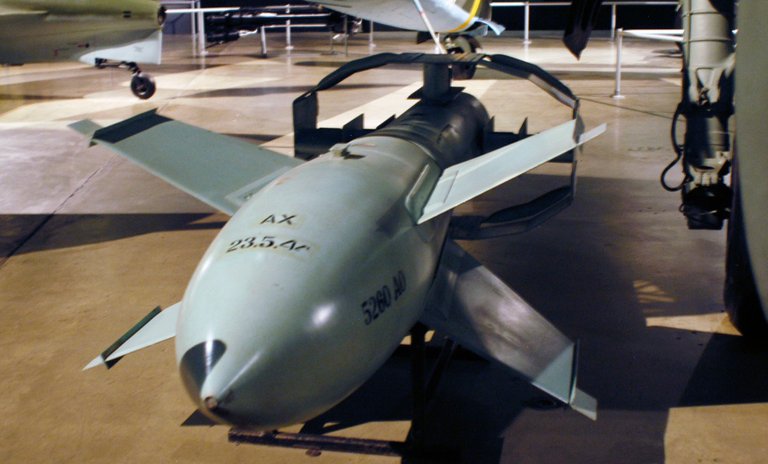
9. Sun Gun
Although this sounds more like something a movie villain would think up, the Sun Gun was a theoretical orbital weapon that was researched by the Nazis during the war. The concept was first thought up in 1929, by the German physicist Hermann Oberth. He designed a space station from which a 100 meter wide concave mirror would be used to reflect sunlight onto a concentrated point on Earth. Once the war began, Nazi scientists expanded on Oberth’s concept that would be part of a colossal space station which would be 5100 miles above the surface of the Earth. According to Nazi scientists, the heat this mirror would be able to project could boil oceans and turn entire cities into ash. (Insert sarcastic comment here)
Apparently the Americans had managed to capture an experimental model of the Sun Gun in 1945. Turns out that after being questioned by Allied officers, the Germans claimed that the technology for the Sun Gun was 50 to 100 years out of reach.
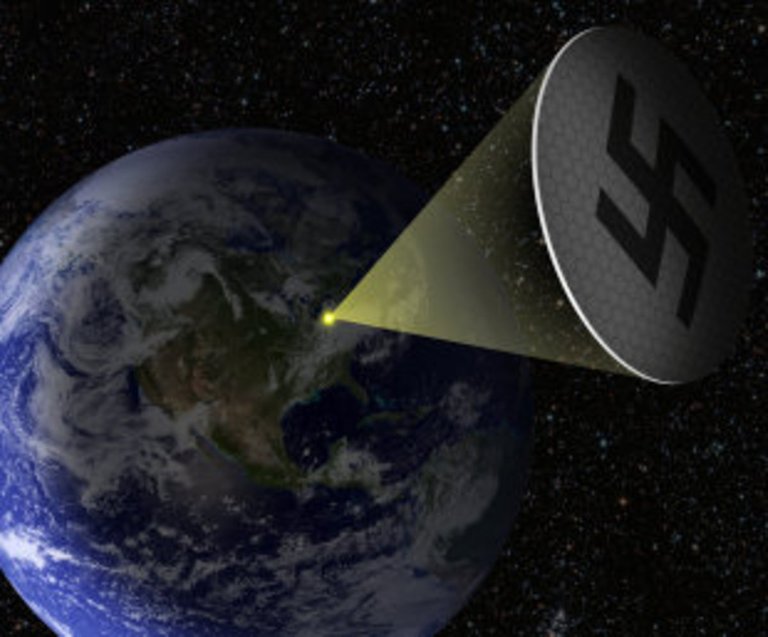
8. Sonic Cannon
This may sound like the stuff of science fiction, but during the early 1940s Nazi engineers had managed to develop a sonic cannon that could literally shake a person apart from the inside. Or at least that’s what they claimed. Designed by Dr. Richard Wallauschek, the cannon consisted of a methane gas combustion chamber leading to two large parabolic reflectors, the final version of which had a diameter over 3m. The "dishes" were pulse detonated at around 44Hz and were connected to to a chamber composed of several sub-units firing tubes. These tubes would allow a mixture of methane and oxygen in the combustion chamber, which when ignited, would turn these gases into noise that could kill. This infrasound, magnified by the dish reflectors, caused vertigo and nausea at 300 yards by vibrating the middle ear bones and shaking the cochlear fluid within the inner ear. Apparently the sound waves created pressures that could kill a man 50 meters away in half a minute. To say the least, this is very unconvincing, since this supposed Sonic cannon was only tested on laboratory animals, and was never tested on human beings. Either or, in practice this thing would have been very vulnerable to enemy fire, since if the parabolic reflectors were damaged, it would render this weapon completely useless.
So in reality, sonic weapons were most likely large, cumbersome, close range devices that resulted in ruptured eardrums. So much for shaking a person apart.
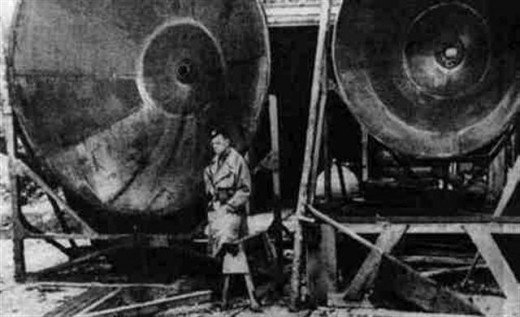
7. Whirlwind Cannon
This was the brainchild of Dr. Zippermeyer, an Austrian inventor who created a number of odd anti aircraft weapons for the Nazis. The cannon worked by generating explosions in a combustion chamber, which would be released through special nozzles, and finally directed towards their target. A scale model was built which proved to be successful, as these “whirlwind” blasts supposedly shattered wooden planks at a range of 600 feet. Despite having a working scale model, the project was scrapped after a full sized version could not replicate the same effect at high altitude targets. The actual “Whirlwind Cannon” itself was found rusting and abandoned by puzzled Allied forces on the Artillery Proving Ground at Hillersleben in April 1945.

6. Bouncing Bomb
Although the British engineer Barnes Wallis was the first to invent a bouncing bomb (dubbed “Upkeep”), the Nazis decided to make one of their own after recovering an intact one. Their reverse-engineered version, nicknamed “Kurt”, was intended to skip along the surface of the water and then explode when it hit a ship. Luckily for the Allies, Nazi scientists couldn’t understand the importance of backspin on these bombs. As a result, they tried to stabilize their bouncing bomb by fitting booster rockets, which in turn, these too had problems in testing. After having failed to recreate “Upkeep”, and after wasting countless hours, time and resources, the Nazis had no other choice but to add the bouncing bomb to their many of their abandoned projects.

5. Horten Ho 229
Retrospectively described by many as “the world’s first stealth bomber”, this was the first pure flying wing plane to be powered by a jet engine. Developed by the Horten brothers, this tailless aircraft with fixed wings resembles a glider and was outfitted with stealth technology, a first for its time. Its sleek design ensured that it would be harder to detect and track with radar than other aircraft since it would have a smaller radar cross-section. Despite proving to be very successful in test flights, this aircraft simply failed to make an impact in the war, as it flew for the first time in 1944.
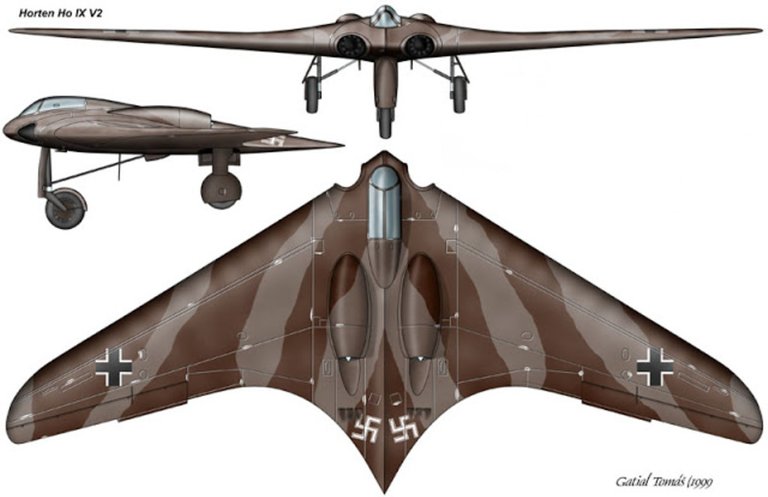
4. Schwerer Gustav
Also known as “The Great Gustav”, this is the single largest cannon ever built and used in history. (Only two were ever built; the second one was called “Dora”) Designed by Krupp Industries, this ultra-heavy railway gun weighed around 1350 tonnes, and could fire seven tonne shells up to a range of 29 miles. If you’re having trouble grasping the vast scale of this monster, you can take a look at the shells that it fired below.
And mind you, that’s not a toy tank sitting in that thing’s shadow.
Just in case you’re wondering why the war didn’t end the moment this terror was unleashed on the battlefield, you have to realize how comically impractical Gustav was. It took three days and a workforce of 250 men to assemble the two 800mm guns, 2500 men to lay all the twin rail tracks, and half an hour to load the damn thing. Fortunately, the only country they could “successfully" fire at was Russia, the only country large enough for this weapon to actually hit.

3. Panzer VIII Maus
Completed in late 1944, this super-heavy tank holds the title for being the heaviest tank ever built. Weighing in at around a colossal 188 tonnes, this ended up bringing its downfall. There simply was no engine powerful enough that would have powered this beast to acceptable speeds. Although the design called for a maximum to 20 kilometers per hour, the Maus prototype could only reach 13 kilometers per hour. However, being the heaviest tank on the planet did have its merits-instead of crossing bridges (its weight made this impossible), the Maus could ford deep streams and could even go underwater in deeper rivers. In the end, the Maus proved to be too costly to produce, and thus, only two were ever built, one of which was never completed.
Also worth mentioning is the proposed Landkreuzer P.1000 Ratte, which was to be another super-heavy tank. What’s so special about the Ratte? As if the 188 tonne Maus wasn’t heavy enough, the Ratte would have been a mind boggling 1000 tonnes-that’s over five times as heavy! Often referred to as “Hitler’s super tank”, its size rendered it impossible to build and maneuver, so it stayed on the drawing board. Had it actually been built though, it would have been outfitted with guns that had previously only been seen on warships. All in all, these super tanks would have been highly impractical, as Hitler relied a lot on Blitzkrieg, which calls for agility and the element of surprise.
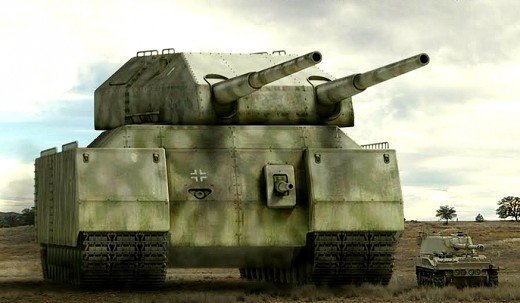
2. Goliath Tracked Mine
Some of you will love this one. “What are these little guys?”, you may ask. Remember that toy RC car that you had as a kid? Well the Nazis simply strapped a bomb to that-sort of like a mini RC car of doom. Also known as beetle tanks to the Allies, these little remote controlled bombs could clear out bunkers, destroy tanks, and disrupt infantry formations. These small contraptions could carry up to 100kg of high explosives at a top speed of around 6 miles per hour, which isn’t that bad, considering what they were carrying. Their major downside was that these things were controlled via a joystick control box, which was connected by 2000 feet of triple-strand cable. All the Allies needed to do, was to cut said wire which would render the mighty Goliath (oh the irony) absolutely useless.
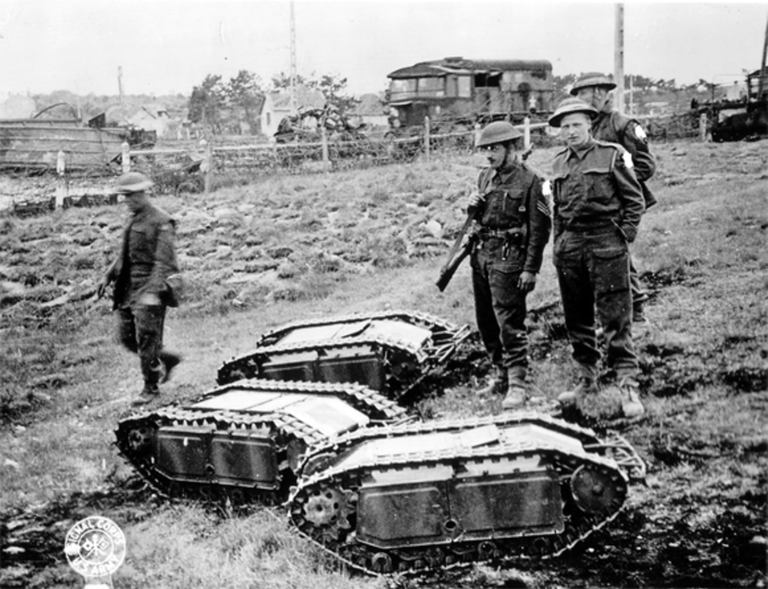
1. StG 44
The Sturmgewehr 44, or StG 44 is considered by many to be the world’s first assault rifle. The StG 44’s design was so successful that modern assault rifles such as the infamous AK-47 and M16 designs are derived from it. It is said that Hitler was impressed so much by this weapon that he personally named it as the Sturmgewehr 44, or Storm (Assault) Rifle 44. Although this weapon was a unique blend of a carbine, submachine gun and an automatic rifle, it arrived too late in the war to make much of an impact on the battlefields of war-torn Europe.
Despite not having much of an impact, the StG 44 had the coolest weapon attachments available at the time. Enter the Zielgerät 1229 infrared vision sight, code named “Vampir”, which aided infantry and snipers to shoot accurately at night. It was first used in combat during the last months of the war and weighed about five pounds, but it also had to be connected to a thirty pound battery pack, strapped to the soldier’s back.
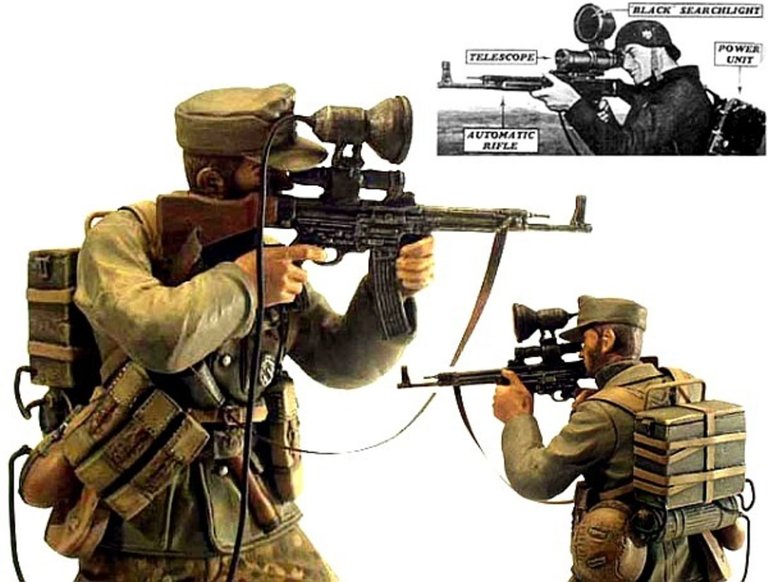
Infrared vision not cool enough for you? Well how about this badass Krummlauf (curved barrel) attachment that allows you to shoot around corners! The idea of being able to fire weapons effectively around corners had existed for a while, but Nazi Germany was the first to actually attempt it. Engineers came up with versions for 30°, 45°, 60° and 90° bends. However, these curved barrels had very short lifespans-approximately 300 rounds for the 30° version and 160 rounds for the 45° variant-as the barrel and bullets fired would be under great stress.
Shout to [ https://owlcation.com/humanities/Top-10-Secret-Weapons-of-Nazi-Germany ] for the list, go check them out for more like this!!!!
Thanks for sharing! I bet half of these are black projects now, didn't we bring over half their scientists and engineers after the war
Operation paperclip
Wonder what would they could have built if they'd won the war.
probably be on mars by now tbh